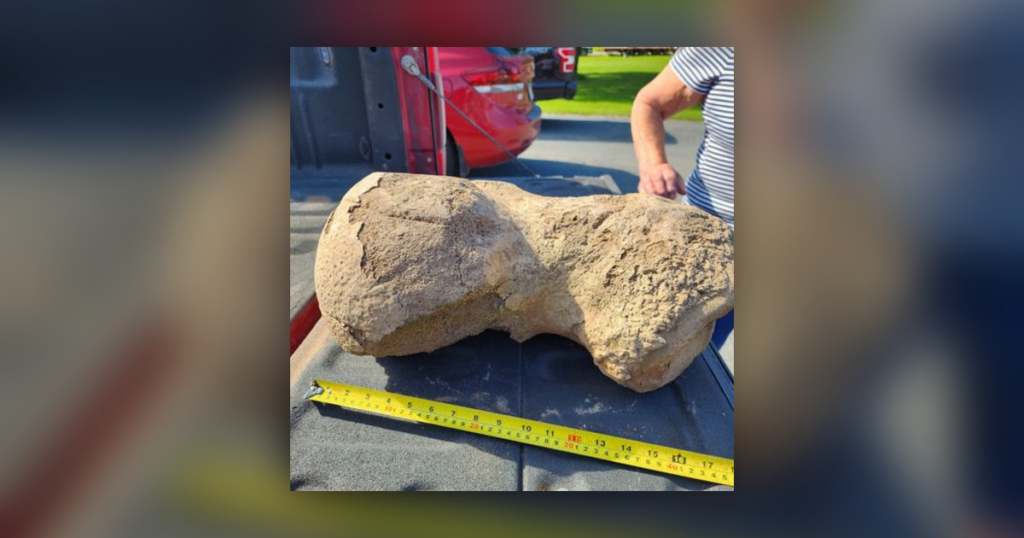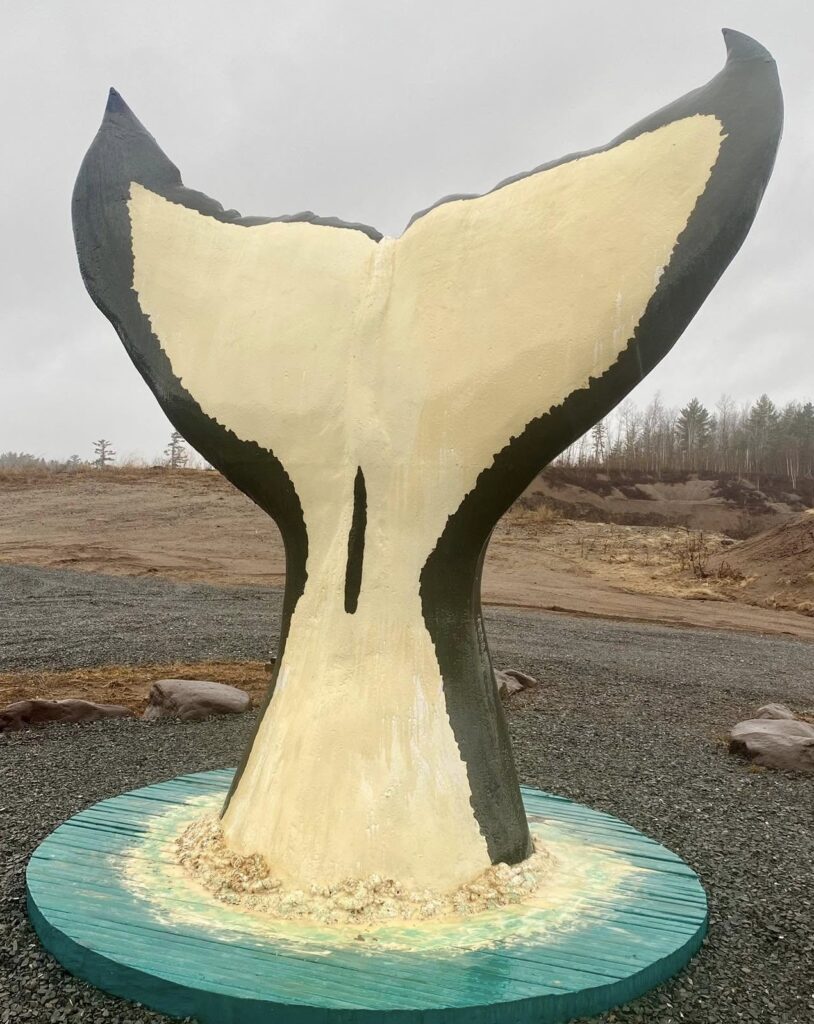Daniel S. Burton
The Tracy Whale has already claimed a name, a piece of the community, and a piece of history. From an outsider’s perspective, the Tracy Whale may just be another attraction from way-back-when, but the find was recent and is a serious piece of history.
After interviewing Robin Hanson — the sculptor of the Tracy whale tail and a man who played a large hand in handling the whale bone — I have documented the story and impact of the Tracy Whale.
The story begins in the Harris Gravel Pit in Tracy, New Brunswick on Date, date, 2024. According to Hanson, a Matt Harris & Son’s employee was on the excavator and something looked unusual. The employee and Matt agreed it was “not like any rocks we see here in the pit and so he set it aside.” About a week later, they were still holding onto it. In fact, Harris was stuck somewhere and used the bone to jack up his truck (no damage caused). When Hanson saw it, he thought it was something really different, like a dinosaur bone, so he sent photos to the New Brunswick Museum, and he was flooded with reactions. The folks at the museum identified it as some socket of a large whale.
What they soon came to realize was that years and years ago, there had been 200 metres of water in the gravel pit in Tracy. “Very very interesting,” Hanson said, “and they were very excited… They had an expert there that was able to say this was a shoulder bone, [the humorous].” Immediately, the museum was interested in taking the find, proving the whale bone an important artifact. After some discussion with Harris, in hopes to “protect and preserve the specimen,” the bone ended up in their hands in storage. According to a radio story from Fredericton’s Pure Country 103.5, they decided to carbon date the bone.

The discovery uncovered the unknown history of that reservoir and that whale swimming around in Tracy: something many would think infeasible. Hanson deemed the discovery of the once-present ocean “absolutely incredible.” He explained, “That caught everybody by surprise and it did me… When you do the research on it, it’s something that happened.” The knowledge, Hanson reminds us, is all because of the curiosity of Matt and his employee, “who saw something different and said, ‘you know I wonder…’”
Recognizing its value, Hanson got to work. Today, a huge, beautiful statue stands in Tracy — the product of Hanson, inspired by the tale. “As an artist,” he said, “I thought it would be quite appropriate to do a sculpture of that whale’s tail and put it in Tracy.”
Matt Harris was all for it. He created a display area to offer the whale for folks to admire and take pictures, generously subsidizing the project himself.
What was the result? How does the community feel?
Robin Hanson reported, “Tracy is so proud to have that statue there. They have basically taken ownership that this is something else that you can see when you come to visit our village. They have a statue of the founder of Tracy, Jeremiah Tracy… and a riverwalk right there… so they are right into tourism now and this is another feature for their community.”
He hoped the sculpture would attract people from all over to engage in the story and local arts and culture. Several Facebook posts have emerged, locals eager to learn about the origins of the whale, and tourists posting photos online. The roadside world holds many treasures, like the sculptor’s own Hanson Art Gallery and Sculpture Garden (39 Morrow Road, French Lake).
The Tracy Whale has quickly cemented itself as one of these wonders, with a story that connects past and present.
In the words of Hanson: “It’s a whale of a tale.”




